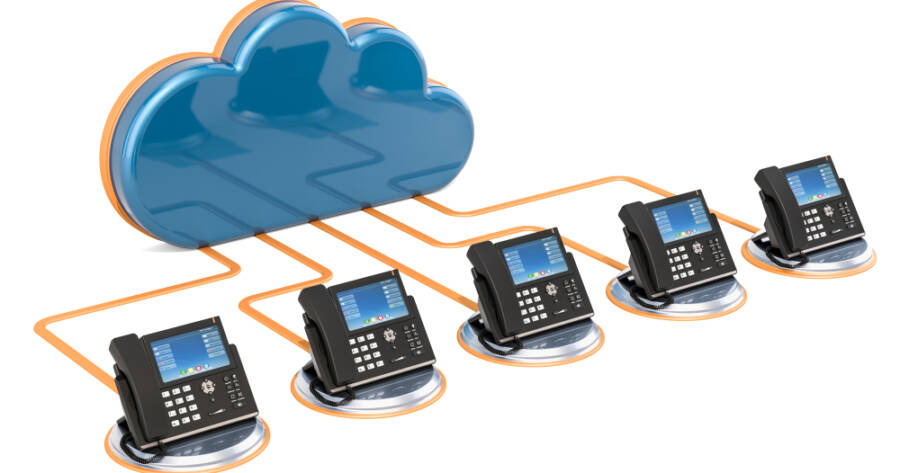Voice over Internet Protocol (VOIP) technology has transformed the way we communicate, enabling voice calls to be transmitted over the internet. Understanding how these phones work is essential for anyone looking to leverage this technology for personal or professional use.
What is VOIP?
At its core, Voice over Internet Protocol (VOIP) converts voice signals into digital data packets, which are then transmitted over the internet. This technology utilizes various protocols to ensure that voice communications are sent and received in real-time. Unlike traditional phone systems that rely on circuit-switched networks, VOIP uses packet-switched networks, allowing multiple calls to share the same bandwidth.1 This efficiency leads to reduced costs and increased scalability for both personal and business communications.
VOIP technology can be used on a variety of devices, including dedicated VOIP phones, computers, and mobile devices. The flexibility of VOIP enables users to make and receive calls from virtually anywhere, as long as they have an internet connection. This characteristic makes VOIP a popular choice for remote work and global communications.
How VOIP Phones Operate
The operation of VOIP phones can be broken down into several key components and processes:
- Conversion of voice to data: When a user speaks into a VOIP phone, their voice is converted into digital data packets. This conversion process involves sampling the analog voice signal, quantizing it, and encoding it into digital format. This digital representation is then compressed to minimize the amount of data that needs to be transmitted, making it more efficient.
- Transmission over the internet: Once the voice is converted into digital data, it is sent over the internet using the Internet Protocol (IP). VOIP employs various protocols, such as the Session Initiation Protocol (SIP) and the Real-Time Transport Protocol (RTP), to establish and manage the call session, ensuring that data packets are transmitted in real-time.2
- Data packet routing: As the voice data packets travel over the internet, they are routed through various servers and network devices. This routing can involve multiple paths, allowing for dynamic adjustments based on network conditions. The use of packet-switched networks means that even if some packets are delayed or lost, the overall quality of the call can be maintained through techniques like jitter buffering and error correction.
- Conversion back to voice: Upon reaching the recipient’s VOIP phone or device, the digital data packets are converted back into an analog signal that can be understood by the human ear. This conversion is performed by a Digital Signal Processor (DSP) within the VOIP phone, which decodes the data packets and plays the voice audio through the phone’s speaker.
Advantages of VOIP Technology
VOIP technology offers numerous advantages over traditional telephone systems, making it an appealing choice for users worldwide:
- Cost-effectiveness: One of the most significant benefits of VOIP is the reduction in communication costs. Since VOIP calls utilize the internet rather than traditional phone lines, long-distance and international calls can be significantly cheaper. Many VOIP providers offer flat-rate pricing or unlimited calling plans, making it easier for businesses and individuals to budget their communication expenses.
- Flexibility and mobility: With VOIP, users can make and receive calls from anywhere with an internet connection. This flexibility allows businesses to maintain communication with remote workers and global clients seamlessly. Additionally, VOIP services can often be accessed through various devices, including smartphones and laptops, enhancing mobility for users.
- Advanced features: VOIP technology supports a range of advanced features that are often unavailable or costly with traditional phone systems. Features such as call forwarding, voicemail-to-email, video conferencing, and virtual receptionists are commonly included in VOIP packages, providing users with enhanced functionality and efficiency.3
- Scalability: For businesses, VOIP technology offers scalability that traditional phone systems cannot match. Adding new users or extensions is often as simple as adjusting settings in a software interface, eliminating the need for extensive hardware installations. This ease of scalability makes VOIP an ideal choice for growing businesses.
Learn More Today!
Voice over Internet Protocol (VOIP) technology has revolutionized the way we communicate, making voice calls more affordable, flexible, and feature-rich. By understanding the components and processes involved in VOIP, users can appreciate its advantages and choose the right provider for their needs.
As businesses and individuals continue to seek cost-effective communication solutions, VOIP will remain a pivotal technology in the landscape of modern communication. Investing in VOIP not only enhances connectivity but also prepares users for the future of digital communication, where flexibility and efficiency are paramount.
